The first flowers are the most desired, the messengers of spring are associated with the warmth of the sun, light, the imminent onset of the summer season.
Irises are extremely popular with gardeners, lush original buds of all the colors of the rainbow open in country flower beds from the beginning of May. The number of species of this plant is huge, exceeding eight hundred. This allows you to select flowers of the desired combinations and create compositions of unearthly beauty.
General information about iridodictiums
Traditional garden irises are rhizomatous, iridodictiums reproduce by ovoid bulbs, they are called "snowdrop irises". The height during flowering is only 15 cm, then the growth of the leaves continues, they reach a length of half a meter. The flowers are brightly and originally colored, the very name of the plant speaks of this: dictyun - "mesh", iris - "rainbow". The color is purple, blue and pale blue, white, blue, pink and red, purple, orange. Spots and stripes add decorativeness. Some varieties exude fragrance. The fruits are large capsules that crack when ripe.
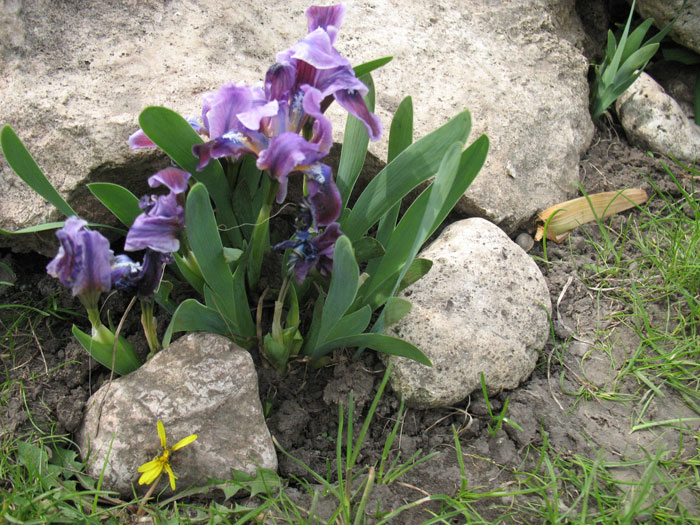
Caring for irises: the secrets of gardeners
Soil preparation
The plant is not overly demanding, but there are several rules that should be considered:
- irises do not like waterlogged soils;
- poorly tolerate mineral-poor soil;
- need sunshine.
To avoid excessive dampness, flowers can be planted on an artificial slope with a slope to the south, to arrange drainage. It is enough to raise the flower bed by 20 - 30 cm and ensure a reliable outflow of rainwater. Irises love the sun, but they are ready to spend part of the time in the shade, it is best to break the flower garden in a place where both are present during the day. Before planting, the soil is enriched with organic fertilizers, dug up, loosened. It is better to make manure in advance, a year before planting.
The best soil for bulbs is calcareous. An alkaline reaction can be achieved by adding chalk, lime, and eggshells to the soil. Sandy soil is diluted with humus, ash and superphosphate are added to it at the rate of 40 g of fertilizer per square meter. In clay, on the contrary, coarse sand is added, all the same humus and compost.
The place where the iris is planted can not be changed for ten years. The ability of the plant to grow rapidly can lead to soil depletion and the need to change the place for the flower bed.
Planting bulbs
Features of this agrotechnical work depend on the variety. In temperate latitudes, Turkish and Caucasian iridodictiums, as well as their hybrids, take root well and tolerate winter cold. In order to protect the acquired bulbs from fungi in advance, they are treated with appropriate compounds. In a dry and open place, it is necessary to make shallow holes up to 7 cm. Cover the bulbs with soil, but do not compact, you can add sand. In the summer, when the leaves and stems die off naturally, the small daughter bulbs are separated and used for further reproduction.
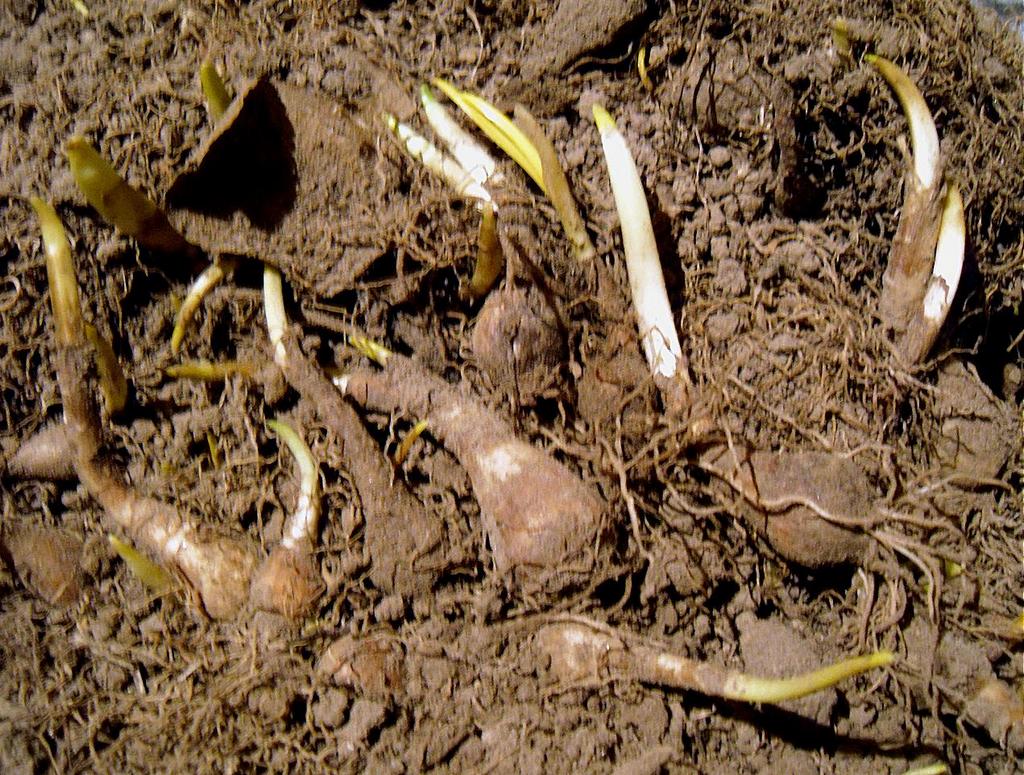
The bulbs of the Juno variety differ from other species in their large size, the presence of fleshy roots, which should be handled with care, as a result of their damage, the plant may die. The best period for planting bulbous irises is the last days of September or the first decade of the next month. The planting material is carefully lowered into the holes and sprinkled with a soil mixture up to 5–6 cm thick. Another option: cover the flower bed with a film from the rain until early October. Reproduction of this variety is carried out by daughter bulbs or seeds sown in special boxes. Shoots appear in the second year after planting.
The distance between plants during planting can be as minimal as two bulb widths, in which case a bush is formed, and up to half a meter, if there is a need to make single plantings. In the second case, the plants will bloom more magnificently.
Reproduction by seeds
Seeds are sown immediately after harvesting to a depth of 2–4 cm. Friendly seedlings appear in early spring, but such plantings bloom only after 4–5 years. With this type of reproduction, the characteristics of the variety may not be preserved.
Landing in the basket
In stores you can buy a special basket for planting bulbs. It is made of plastic with holes.
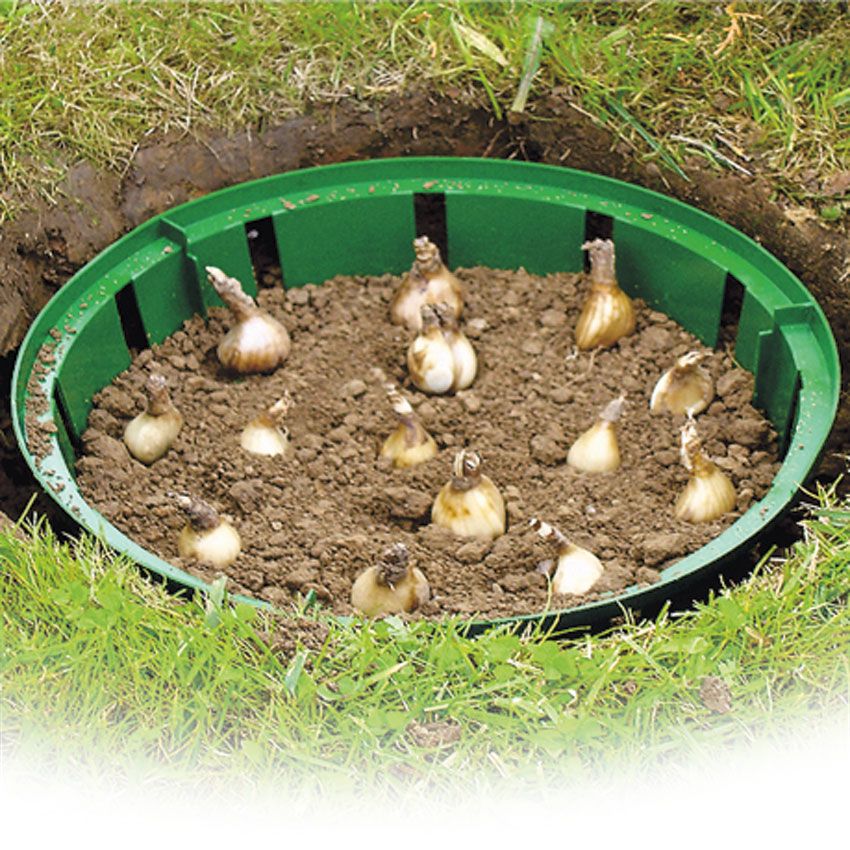
To plant irises in a basket, it is necessary to remove part of the turf at the future planting site, dig a hole to a depth of 30 cm, the basket should fit completely in it. Fertilizers are poured at the bottom of the pit, a basket is placed, filled with moistened soil and bulbs are planted. Planting material is covered with a thin layer of earth, the removed piece of turf is returned to its place. Such a planting will allow the plant to spend the winter period in favorable conditions. If necessary, the basket is easily removed from the ground along with the bulbs and moved to dry indoors.
Care: watering, top dressing
During the rainy season, irises are not watered, and in dry times, the flowers are moderately irrigated only in the evening.
In the spring, after waiting for the topsoil to dry, fertilizers are applied - ready-made solutions and dry mixes. You can simply sprinkle small granules on top of the soil and loosen the top layer well without hooking the roots.
A three-stage option for feeding irises:
- in spring, nitrogen, phosphorus, potassium (2:1:3) are added to dry soil;
- at the time of bud formation, the same composition, but different proportions - 3: 1: 3;
- a month after the start of flowering - potassium and phosphorus (1: 1).
Regular and proper feeding ensures fast and long flowering, high decorative qualities. Fertilization during the formation of flower buds will ensure the good development of plants next year. Excess nitrogen can cause an undesirable effect: the foliage will thrive, but the iris will not bloom.
The most popular types and varieties
Iridodictium reticulum
Originating from the Caucasus, in the wild the plant blooms with purple or light blue flowers with a yellow stripe. In culture, hybrid varieties were obtained:
- "Paulina" - a rich pink-purple flower with white spots;
- "Kantab" - pale blue with bright orange spots;
- "GS Didzh" - purple-violet with orange spots;
- "Joyce" and "Harmony" - blue with bright yellow;
- "Clarette" - pale blue with dark spots;
- "Jenin" - even lighter with bright yellow stripes;
- "Natasha" - white with a bluish tint.
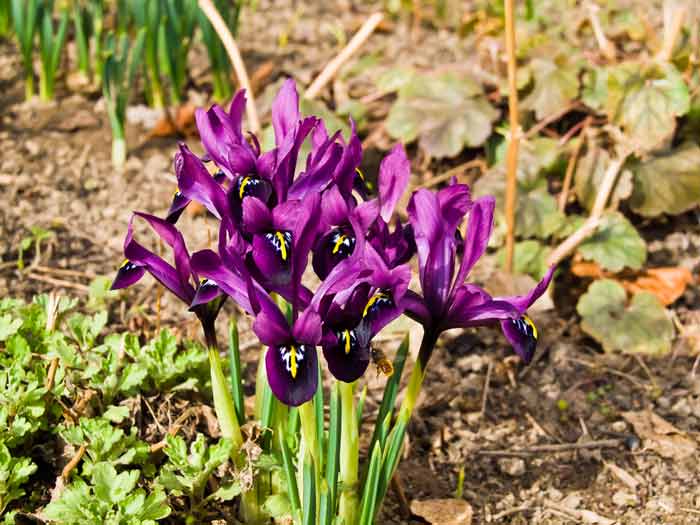
Iris Vinogradov- also a Caucasian species with large flowers of light yellow color, rarely found in nature. The most famous variety is "Katharin Hodkin", the color is mixed yellow and pale blue.

Iris Dunford- A native of Turkey. Bright yellow and fragrant flowers with small greenish spots.
Iris Kolpakovsky grows on the rocky and forested slopes of the mountains of Central Asia. The flowers are light purple with dark spots.
Iris variegated- a bulbous plant with blue flowers in white or golden spots.
Spring irises of the Juno group
Sun-loving bulbous plants require humus-rich soil. Landing is carried out in September or October, the embedment depth is 5 cm, the distance between irises is from 15 to 25 cm.
Bukhara iris grows up to 30 cm high, blooms with creamy yellow flowers in April.
Iris splendid, height - up to 60 cm, flowers - purple with white spots, blooms in May.
Iris greberianovsky, height - up to 30 cm, flowering - in April, flowers - blue with white spots.
Dwarf bearded men look good in plantings on alpine hills next to ground cover plants.
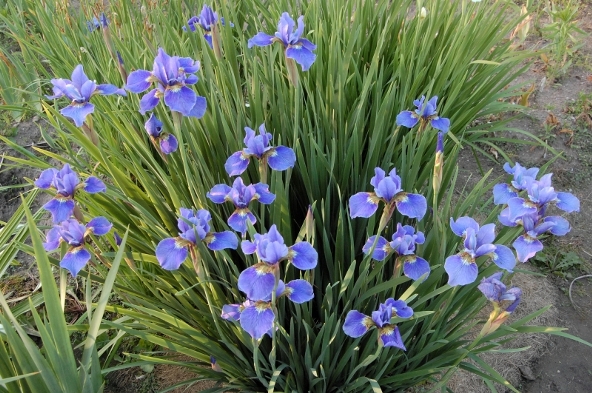
Summer-blooming irises of the Xifium group
Varieties are sun-loving and not hardy, height - up to 60 cm. They bloom in the summer, good for cutting. Bulbs are planted in autumn to a depth of 10 - 15 cm and at the same distance from each other. Dutch varieties bloom earlier than others, in June and July - English irises, July - the time of Spanish varieties.
Bulbous irises in the landscape
Iridodictiums are suitable for landing on. The plant goes well with other bloomers in early spring. With the help of irises, you can create bright blooming spots in places where other plants feel uncomfortable. Single plantings are recommended in rocky gardens, in mixborders, in flower beds, group curtains on the lawn are beautiful.
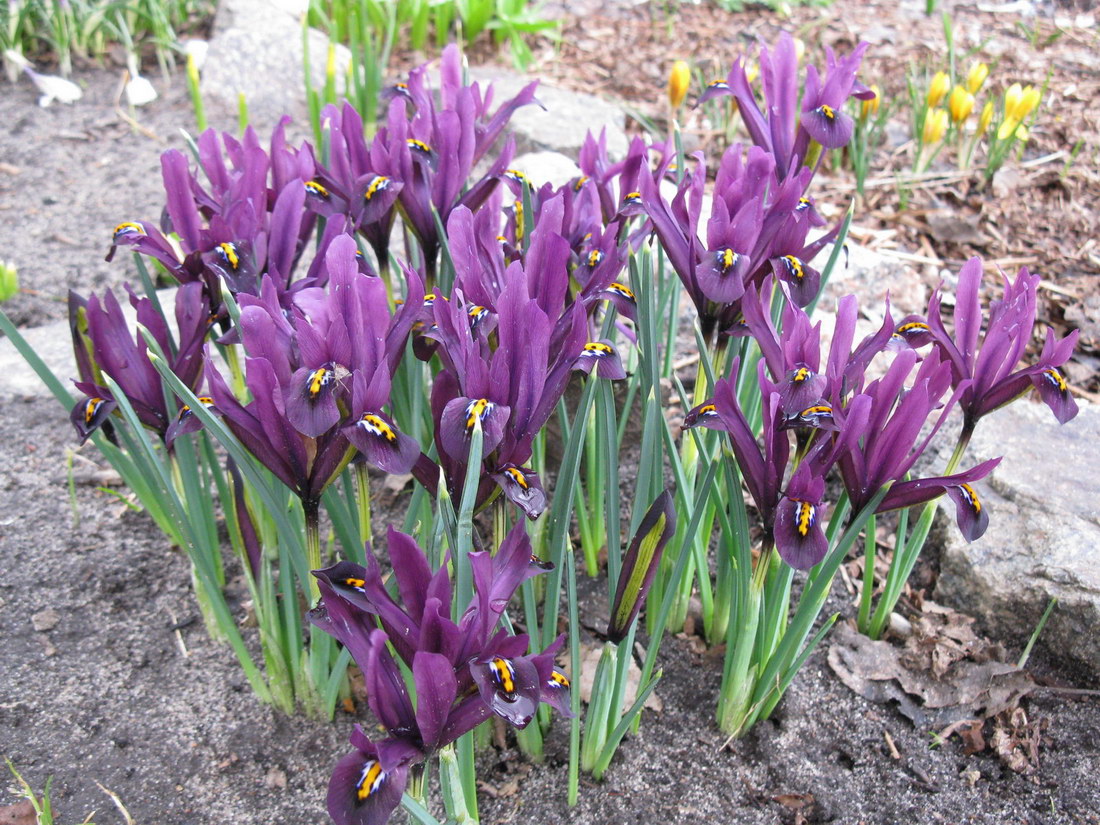
Diseases and pests: preventive measures
To prevent the appearance of uninvited guests, it is necessary to spray irises every two weeks. Procedures should be started from the period when the foliage reaches a size of 10 cm. There are universal pesticides on sale. As soon as buds appear, processing is stopped.
Often plants become ill with bacteriosis, which affects the roots and bulbs, causing rotting of individual parts. Iris must be dug up, the damaged parts removed, washed in a solution of potassium permanganate and transplanted to a new place. It is not so easy to notice the onset of the disease: the number of leaves in a bunch decreases, problems appear with the formation of flower buds.
A good preventive measure is to remove the old stem along with leaves and flower stalks in preparation for the next year's bulbs. Dead parts of the plant may contain insect pests.
Proper, traditional care for bulbous irises guarantees bright flowering, the creation of unique flower arrangements on the site.
Photo of bulbous irises
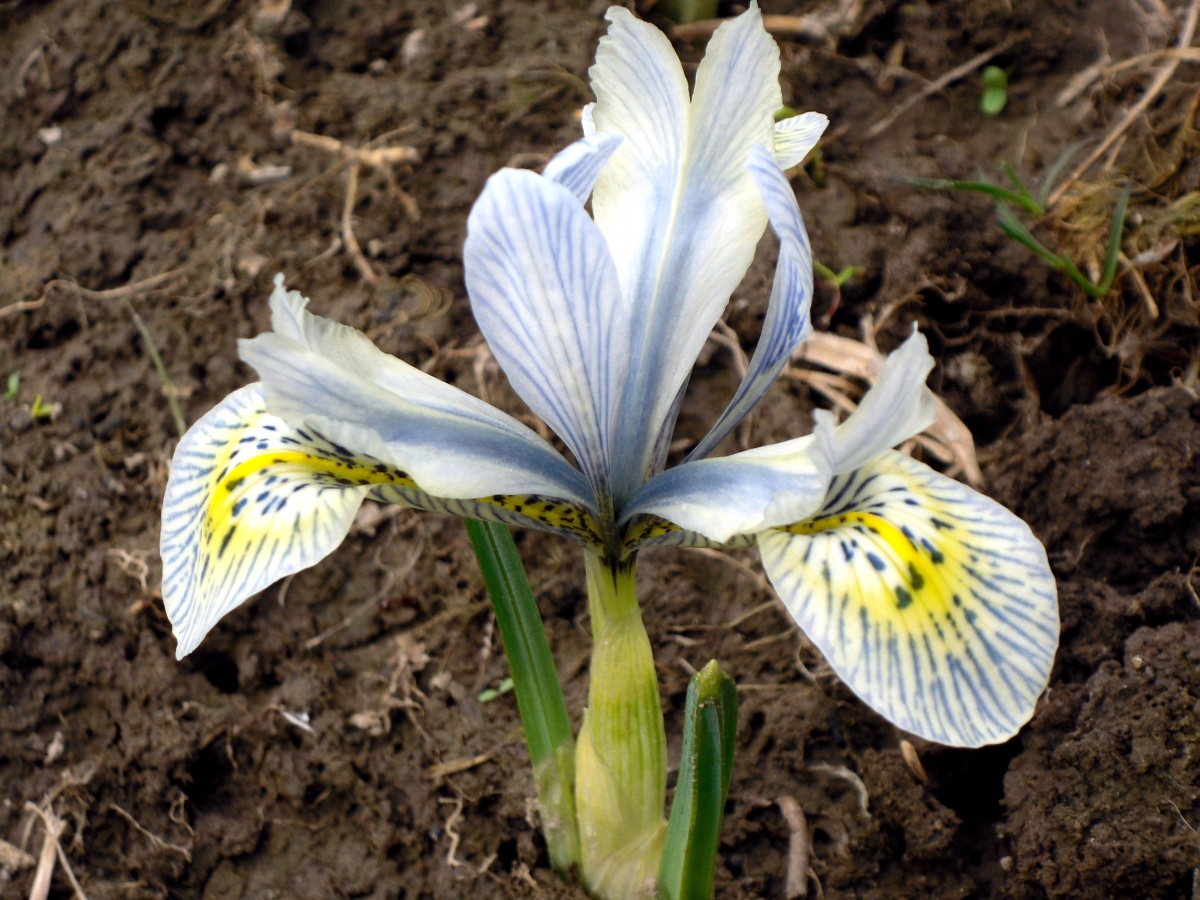 Iris reticulated.
Iris reticulated.














